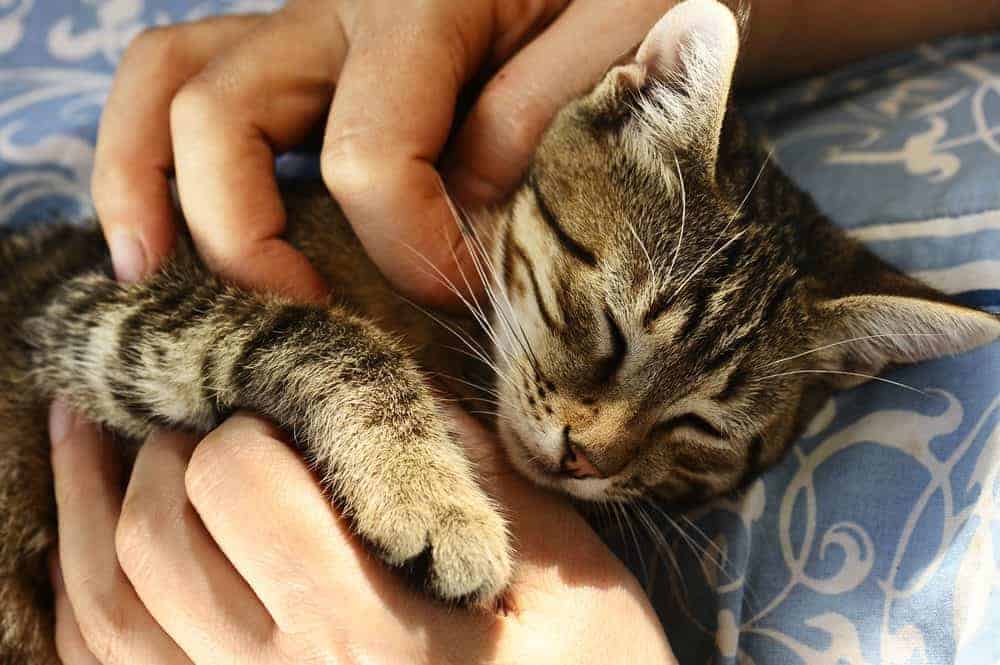
Cats like to feel in control of whatever situation they’re in and are quick to show when they’re not happy. Never is this more evident when it comes to being handled when they don’t want to be. This can mean that vital tasks – such as grooming or getting your cat into their carrier for a trip to the vets – can prove a stressful experience for felines and humans alike.
To address this, cat welfare charity International Cat Care, in partnership with Ceva Animal Health, has developed a set of cat handling videos. Calling on the skills of behaviour and training experts Dr Sarah Ellis and Linda Ryan, feline veterinary specialists Martha Cannon and Dr Sam Taylor, and ophthalmologist Christine Heinrich, the videos detail best practice handling techniques and approaches that reduce stress for cats.
Get the knowledge
International Cat Care states: “For cats ‘less is more’ and finding ways to work with them is key. It is amazing how much can be achieved with the right attitude and knowledge of how to approach and hold the cat.”
EXPERT TIP
Cats generally prefer to be touched on the head and face as these are areas that are rich in scent glands.
The team has developed a total of 29 short videos – some aimed at owners and others specifically for veterinary teams to boost their knowledge of the best way to handle cats and to help owners prepare for veterinary visits.
For owners, there are videos covering two different areas – interacting with cats and handling cats. Particular attention is paid to getting cats used to going in the cat carrier and travelling, demonstrating how cats can be helped to understand that entering and spending time in their carrier is a positive experience. There are also videos to help owners to get their cats accustomed to having ears, eyes, mouth, paws/claws and coat checked.
EXPERT TIP
Always stroke a cat slowly in the direction of their fur. Do not ruffle their fur or stroke it in the opposite direction.
Featuring a range of gorgeous feline stars and expert handlers, the videos provide a valuable insight into human/feline interactions, along with lots of useful tips.
Tried and tested techniques
For example, the Approaching a Cat video highlights the importance of giving a cat the choice of whether or not they want to interact, using tried and tested techniques. These include:
- Crouching down or kneeling to appear less threatening
- Avoiding directly facing the cat
- Averting your gaze and blinking slowly
- Outstretching your hand as an offer for interaction with a loosely clasped fist, outstretched finger or palm stretched upwards
- Allowing the cat to sniff and rub on your hand before attempting to stroke them, while making a ‘chirrup’ sound as a greeting, to make your invitation to interact as positive as possible
- If the cat does not rub against your hand, he has declined the invitation to interact with you and you should not pursue him
EXPERT TIP
You can tell if your cat is enjoying an interaction with you if they push their body weight into your hand as you stroke them, exhibit slow, rhythmic purring and have gently closed eyes.
Burgess in-house vet Dr Suzanne Moyes commented: “This collection of videos makes for fascinating viewing and all cat owners will benefit from the expert advice they contain.”
You can watch the videos here:
Interacting with cats
Approaching a cat
How to touch and stroke a cat
Things to avoid when handling a cat
Handling your cat for grooming
Handling kittens
Handling your cat at home
Encouraging your cat to be happy in a cat carrier
Getting your cat used to travel
Putting your cat in a cat carrier
Helping your cat to accept having its ears checked
Helping your cat to accept having its mouth checked
Helping your cat to accept having its coat checked
Helping your cat to accept having its paws checked and claws clipped
Helping your cat to accept having its eyes checked
If you found this interesting you may also like:
How to read your cat’s body language
Feline behaviour – strange but true
Source: icatcare.org














